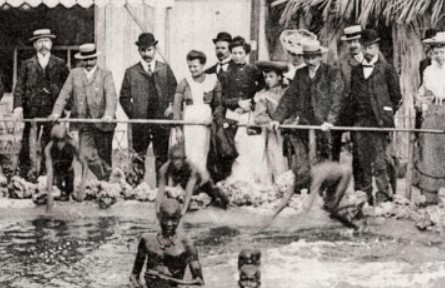In the late 19th and early 20th centuries, human zoos were a common attraction in New York City. Populated by various ethnic groups, these zoos would feature individuals from various cultures, usually indigenous tribes from around the world. Visitors to the zoos were able to observe the people in their “natural habitats” and learn about their customs and lifestyles.
The most infamous of these human zoos was the American Museum of Natural History, which opened its doors in 1869. The museum featured a variety of exhibits, including a “living ethnographical” exhibit that featured members of various tribes from around the world. These exhibits were designed to teach visitors about the customs, lifestyles, and cultures of people from other countries.

The most visited of these exhibits was the “Congo Village.” This exhibit featured members of the Congolese Bakuba tribe and showcased the art, music, and culture of the tribe. The exhibit was incredibly popular and drew thousands of visitors every day.
In addition to the American Museum of Natural History and the Bronx Zoo, Coney Island also featured a human zoo. The Human Zoo at Coney Island was opened in 1903 and featured members of various cultures, including Native Americans, Filipinos, and African Americans.
The exhibit featured various activities, including a dance theater, a petting zoo, and a sideshow. Many of the visitors to the Human Zoo at Coney Island were immigrants who were eager to learn more about the cultures they had just left behind. In the early 1900s, human zoos in New York City were a popular form of entertainment. However, as public opinion began to shift in the mid-20th century, these zoos began to be seen as offensive and exploitative.

As a result, most of these zoos were closed down and their exhibits were dismantled. Today, the legacy of human zoos in New York City is remembered as a dark chapter in our history. It is a reminder of how far we have come in terms of our understanding of culture, race, and ethnicity, and how far we still have to go.
In Europe, Hitler was the first European leader to put an end to human zoos, Belgium would be the last European nation to ban them and had human zoos all the way up to the 1950s.

